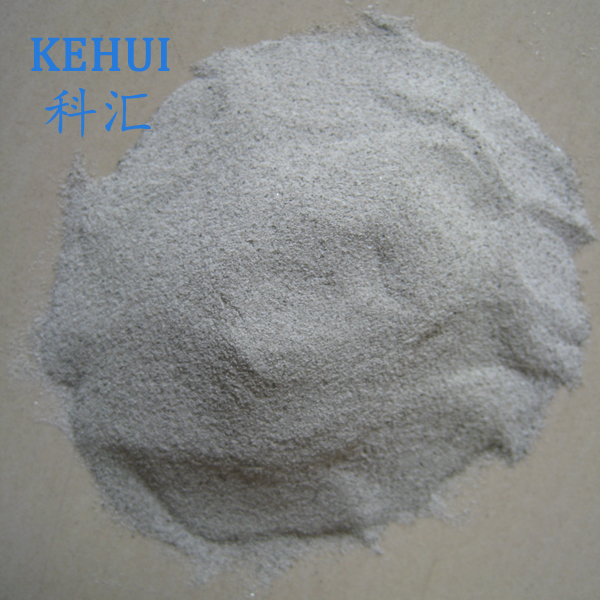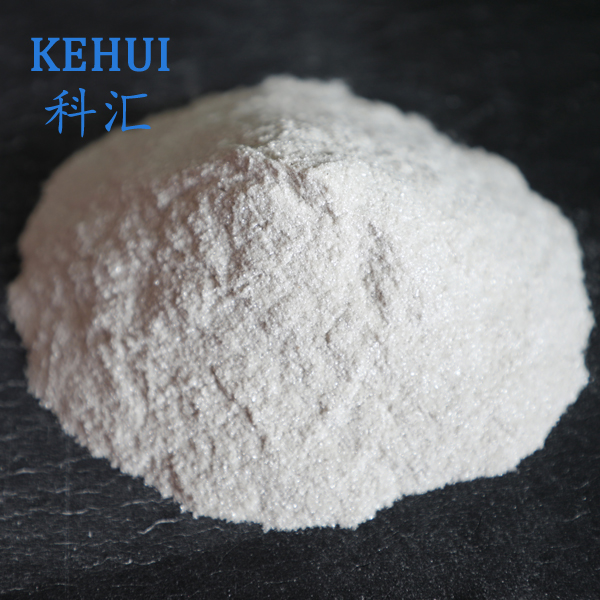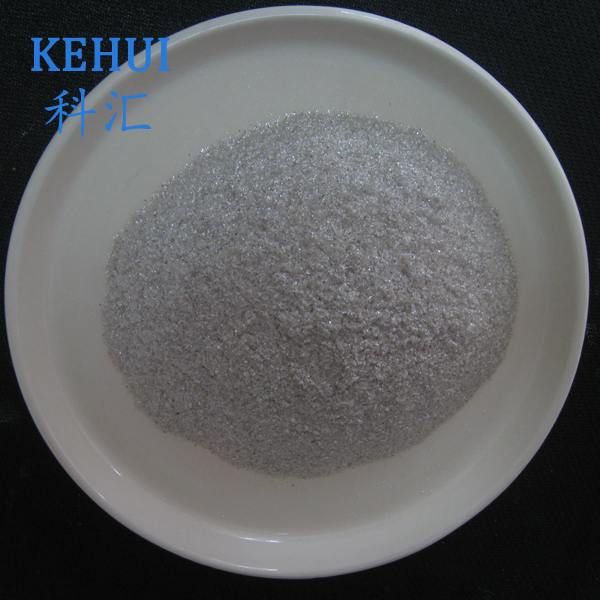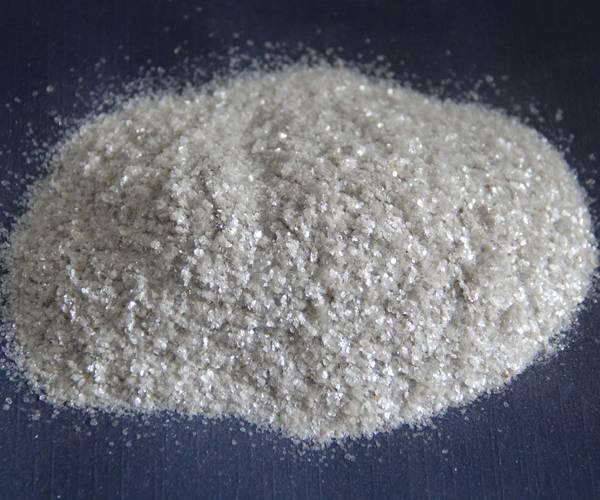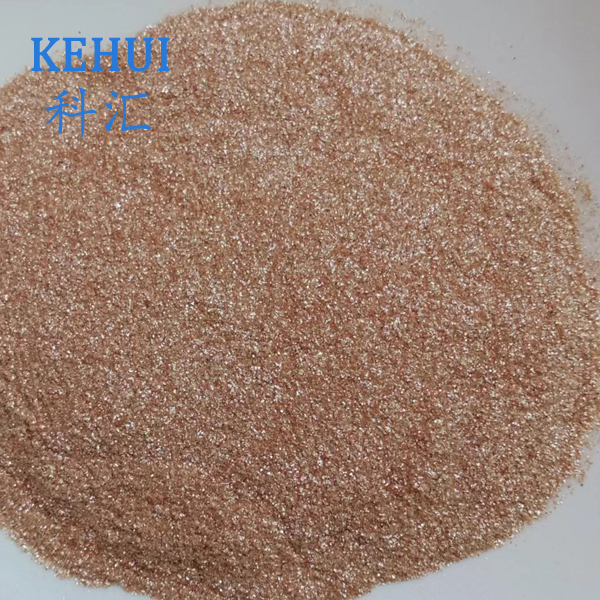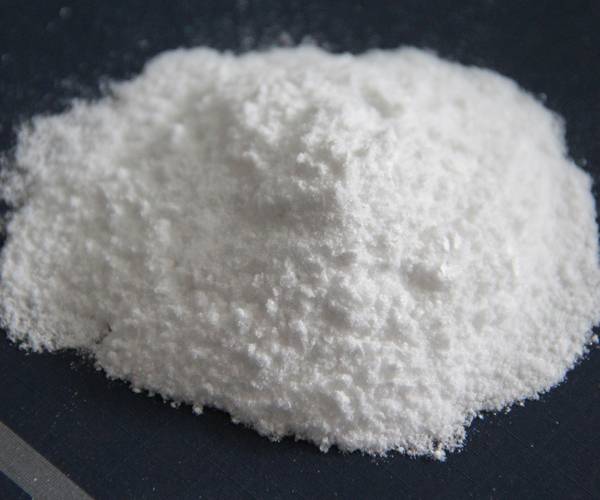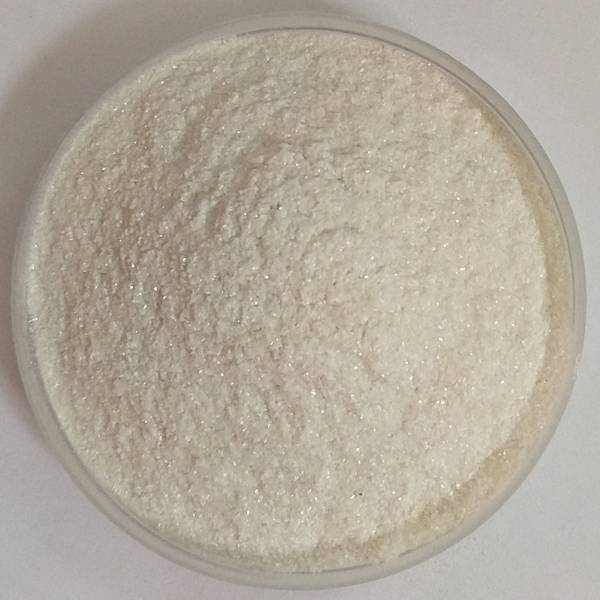An In-depth Look at Horticultural Coarse Perlite and Perlite Horticultural Media
Industry Trends: The Evolving Landscape of Horticultural Substrates
The global horticulture industry is experiencing a significant paradigm shift, driven by increasing demand for sustainable and efficient growing solutions. As urban farming, vertical agriculture, and precision horticulture gain traction, the reliance on high-performance growing media has become paramount. Traditional soil-based methods are often challenged by issues like compaction, inconsistent nutrient delivery, and disease susceptibility. This has propelled inert, lightweight, and versatile substrates like Horticultural Coarse Perlite to the forefront.
Recent market analyses indicate a steady growth trajectory for the perlite market in agriculture and horticulture. Projections suggest a compound annual growth rate (CAGR) of over 5% for the horticultural perlite segment from 2023 to 2030, driven by the expanding floriculture, nursery, and hydroponics sectors. This growth underscores the industry's recognition of perlite's unique physical properties that facilitate superior root development, optimized water management, and enhanced nutrient uptake, leading to healthier plants and higher yields.
Furthermore, concerns regarding peat moss sustainability and its environmental impact have led many growers to seek alternatives. Horticultural Coarse Perlite, a naturally occurring mineral that is expanded through a thermal process, offers an environmentally responsible and highly effective substitute or amendment. Its widespread acceptance is a testament to its proven efficacy and its alignment with modern agricultural practices that prioritize resource efficiency and ecological responsibility. The shift towards soilless cultivation methods, propelled by the need for controlled environments and water conservation, further cements perlite's indispensable role. Its inherent stability and lack of biological degradation make it a reliable choice for long-term cultivation cycles, unlike many organic components that break down over time, altering the medium's structure and properties. This longevity contributes to both environmental sustainability and economic efficiency for growers.
What is Horticultural Coarse Perlite? Defining a Key Growing Medium
Horticultural Coarse Perlite, also widely known as Perlite Horticultural Media, is an amorphous volcanic glass that has a relatively high water content, typically formed by the hydration of obsidian. Its unique property is that when heated to a suitable point in its softening range (around 850-1000°C), it expands up to 20 times its original volume. This expansion is due to the vaporization of the water trapped within the perlite rock, creating countless tiny bubbles within the softened glassy particles. The result is an incredibly lightweight, white, porous, and sterile material with an intricate cellular structure.
The term "coarse" in Horticultural Coarse Perlite refers to its particle size distribution. Unlike fine or medium grades, coarse perlite offers larger, more irregular particles, which are particularly beneficial for applications requiring exceptional drainage, high aeration, and structural stability. This larger particle size creates more macro-pores within the growing medium, facilitating superior air exchange around plant roots and preventing waterlogging, a common issue that leads to root rot in traditional soils. This specific grading is engineered to provide an optimal balance between air and water in the root zone, crucial for robust plant development, especially for crops sensitive to anaerobic conditions or requiring intensive oxygenation, such as in hydroponic systems.
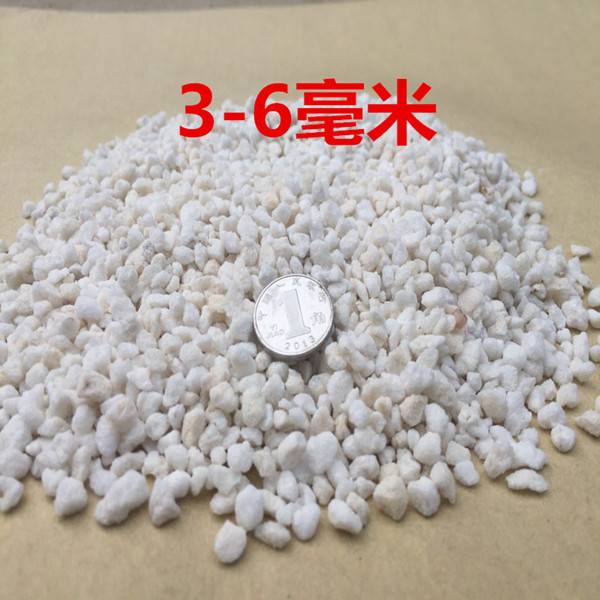
The inert nature of perlite means it does not contribute or detract from the nutrient balance of the growing solution, making it an ideal component for precision horticulture where nutrient delivery is tightly controlled. Its neutral pH (typically between 6.5 and 7.5) also ensures it won't adversely affect the acidity or alkalinity of the soil mix or hydroponic solution, providing a stable environment for a wide range of plants. This chemical stability is a cornerstone of its utility, as it eliminates unpredictable reactions with fertilizers and allows growers to maintain precise control over nutrient availability. Furthermore, the light-reflecting white surface of perlite can help to keep the growing medium cooler in intense sunlight, mitigating heat stress on roots, particularly beneficial in hot climates or greenhouse environments. Its amorphous structure, unlike crystalline materials, presents no risk of asbestos-like fibers, ensuring a safe handling experience.
Technical Parameters & Specifications of Horticultural Coarse Perlite
Understanding the precise technical specifications of Horticultural Coarse Perlite is crucial for growers to optimize their growing media and achieve desired plant performance. The efficacy of perlite largely depends on its physical properties, which are carefully controlled during the manufacturing process to meet stringent industry standards.
| Property | Typical Value Range | Measurement Standard | Significance for Horticulture |
|---|---|---|---|
| Bulk Density (Loose) | 90 - 150 kg/m³ (5.6 - 9.4 lbs/ft³) | ASTM C549 | Extremely lightweight, reduces shipping costs and makes handling easier for growers, especially in large-scale operations or for container111ized plants. Improves structural stability of growing mixes. |
| Particle Size Distribution | Typically 2.0 mm - 6.0 mm (Coarse Grade) | Various Sieve Analysis Methods (e.g., ISO 3310-1) | Ensures optimal drainage and aeration through large pore spaces. Larger particles create more air pockets, preventing compaction and promoting root health. Crucial for specific hydroponic systems and potting mixes. |
| pH Level | 6.5 - 7.5 (Neutral) | ISO 10390 | Does not alter the pH of the growing medium or nutrient solution, making it compatible with a wide range of plants and allowing precise pH control. Enhances nutrient availability by maintaining optimal pH range. |
| Water Holding Capacity (WHC) | Approx. 30-60% by volume (internal pores) | Internal Test Methods (related to ASTM D2974) | Holds significant amounts of water on its surface and within its internal pore structure, releasing it slowly to plants. Reduces watering frequency while preventing waterlogging, a perfect balance for many plants. |
| Air Porosity (Air-Filled Porosity) | Approx. 35-50% by volume (at container111 capacity) | ASTM D2974 (modified for growing media) | Provides excellent aeration to the root zone, critical for root respiration and preventing anaerobic conditions that foster disease. Promotes robust root growth and nutrient uptake efficiency. |
| Sterility | Aseptic (post-expansion) | Microbiological Testing | Free from weeds, insects, and disease pathogens, reducing the risk of contamination and promoting a healthy start for seedlings and young plants. Essential for propagation and sensitive crops. |
| Inertness | Chemically stable, non-reactive | Chemical Purity Analysis (e.g., ICP-MS) | Does not react with fertilizers or alter nutrient solutions, ensuring that plants receive precisely the nutrients intended. Prevents nutrient lockout or toxicity, enabling precise nutrient management. |
| Compressive Strength | Low, but resistant to compaction under normal horticultural loads | Simulated Compaction Tests | Maintains structural integrity over time, preventing settling and ensuring consistent air and water balance throughout the growing cycle, even over long periods. |
| Cation Exchange Capacity (CEC) | Very Low (typically | ASTM D2732 | Its low CEC means perlite does not absorb or release nutrients, allowing for precise control of nutrient delivery in hydroponic systems and specialized mixes. This is critical for preventing nutrient deficiencies or excesses. |
These parameters underscore why Perlite Horticultural Media, particularly the coarse grade, is a preferred choice for growers seeking precise control over their growing environment. Adherence to international standards like ISO 9001 for quality management systems further ensures the consistency and reliability of the product, providing peace of mind to commercial and hobbyist growers alike. The controlled particle size distribution, in particular, is a critical factor for professional growers as it directly influences the media's physical properties, which in turn dictate irrigation frequency, aeration levels, and overall plant health. For instance, coarse perlite ensures macro-porosity that allows for rapid drainage and prevents the anoxic conditions detrimental to root development in many valuable crops.
The Manufacturing Process of Horticultural Coarse Perlite: From Ore to Optimal Growth
The transformation of raw perlite ore into the highly effective Horticultural Coarse Perlite is a sophisticated industrial process involving controlled thermal expansion. This meticulous manufacturing ensures the final product possesses the ideal physical characteristics vital for horticultural success. Understanding this process highlights the precision and quality control involved in producing top-tier Perlite Horticultural Media.
Process Flow Explained:
-
1. Raw Material Sourcing & Crushing:
The journey begins with the careful extraction of perlite ore, a naturally occurring siliceous volcanic rock, from geological deposits. This raw ore is then transported to processing facilities where it undergoes initial crushing. Large chunks of ore are broken down into smaller, manageable sizes, typically ranging from a few centimeters down to fine particles. This step prepares the material for subsequent processing and helps in achieving uniform expansion, which is critical for consistent product quality. Quality control at this stage involves analyzing the chemical composition of the ore to ensure it meets the necessary purity standards.
-
2. Grinding & Sizing (Milling):
After initial crushing, the perlite ore is further ground in mills to achieve specific particle size distributions. For Horticultural Coarse Perlite, this step is critical to ensure that the ground particles are within the optimal range for coarse expansion. Advanced screening mechanisms, often employing vibrating screens and air classifiers, are used to separate particles by size, ensuring precise consistency in the final product. This precision in sizing directly impacts the porosity, water-holding characteristics, and ultimately the performance of the expanded perlite in horticultural applications. Material that does not meet the specified size range is re-circulated for further grinding or utilized for other perlite products.
-
3. Pre-heating (Optional but beneficial):
In some advanced manufacturing setups, the sized perlite particles may undergo a pre-heating phase in a controlled environment. This step slowly brings the temperature of the raw perlite up, typically in a rotary kiln, preparing it for the rapid thermal shock of the expansion furnace. Pre-heating can improve the efficiency of the expansion process by driving off surface moisture and reducing the energy input required in the main furnace. It also contributes to a more uniform and consistent cellular structure in the final expanded product, reducing thermal stress on the material and minimizing the production of fines.
-
4. Expansion (Flash Heating in Vertical Furnace):
This is the core of the perlite manufacturing process. The pre-heated (or raw, sized) perlite particles are fed into a specially designed vertical furnace, often referred to as an expansion furnace, operating at extremely high temperatures, typically between 850°C and 1000°C (1562°F to 1832°F). As the perlite particles rapidly pass through this intense heat zone, the inherent water molecules trapped within the perlite ore instantly vaporize. This rapid vaporization causes the softened glassy particles to puff up like popcorn, expanding up to 20 times their original volume. This "popping" action creates the countless microscopic, inert air cells that give expanded perlite its unique lightweight and porous properties. This is a continuous, highly controlled process, with finely tuned temperature and residence time controls to ensure optimal expansion and structural integrity, preventing over-expansion or under-expansion.
-
5. Cooling:
Immediately after expansion, the hot, lightweight expanded perlite is rapidly cooled. This is typically achieved by drawing ambient air through the expanded material in specialized cooling zones or cyclones. Rapid cooling stabilizes the cellular structure formed during expansion and prevents the material from becoming too brittle or degrading. The cooling system also helps in conveying the product to the next stage of the process while recovering some of the heat for energy efficiency. This step is vital to ensure the physical integrity and durability of the expanded perlite particles.
-
6. Screening & Grading:
The expanded perlite is then passed through a series of vibrating screens, each with different mesh sizes. This crucial step separates the expanded perlite into various grades based on particle size. For Horticultural Coarse Perlite, screens are meticulously selected to capture particles predominantly within the 2.0 mm to 6.0 mm range, ensuring the product meets the specific requirements for coarse horticultural applications, maximizing drainage and aeration. This precise separation process also helps remove any unexpanded fines (dust) or overly large particles, ensuring product homogeneity and performance consistency. Modern facilities often employ optical sorters for even greater precision.
-
7. Quality Control & Packaging:
Before packaging, stringent quality control checks are performed on samples from each production batch. This includes testing for bulk density, particle size distribution, pH, water holding capacity, and air porosity, all adhering to established industry standards like ASTM (American Society for Testing and Materials) and ISO (International Organization for Standardization). Only material that consistently meets these rigorous specifications is approved. The finished Perlite Horticultural Media is then efficiently packaged into various sizes, from small retail bags for home gardeners to large bulk bags (super sacks) for commercial operations, ensuring moisture protection and ease of handling, ready for distribution worldwide. Each package is typically labeled with batch numbers for full traceability.
(Note: For a visual representation of this process, many manufacturers provide detailed flowcharts or short animated videos on their websites. An illustrative diagram combining arrows and textual descriptions would effectively demonstrate the transformation of raw ore into expanded perlite, showcasing critical control points.)
Throughout this entire process, adherence to international quality management standards like ISO 9001 is paramount. This ensures consistency in product quality, from raw material sourcing to final packaging. The material itself is naturally occurring volcanic glass (siliceous volcanic rock), making it a highly sustainable choice. The manufacturing process focuses on thermal expansion, rather than casting, forging, or CNC machining, yielding a product that is uniquely lightweight, sterile, and chemically inert. Its robust cellular structure contributes to an extremely long service life, remaining effective in growing media for multiple seasons without significant degradation. This durability, coupled with its natural origin and the inherent advantages it brings to plant health, makes Horticultural Coarse Perlite an indispensable component in modern agriculture, floriculture, hydroponics, and even for improving soil structure in landscaping and green roof applications. Its resistance to biological decomposition also means it does not deplete soil nutrients or require frequent replenishment, further contributing to its environmental and economic advantages.
Application Scenarios: Where Horticultural Coarse Perlite Thrives
The versatility and unique properties of Horticultural Coarse Perlite make it an invaluable component across a broad spectrum of horticultural applications. Its ability to improve aeration, drainage, and water retention concurrently positions it as a superior choice for various growing systems and plant types. Here are some of the primary application scenarios:
- Potting Mixes & Substrate Blends: Horticultural Coarse Perlite is perhaps most commonly used as a vital amendment in soilless potting mixes. When blended with peat moss, coir, compost, or other organic materials, it significantly improves the physical structure of the mix. It prevents compaction, ensuring vital oxygen reaches the root zone while simultaneously holding moisture on its extensive surface area. This balance is crucial for container111ized plants, promoting vigorous root growth and preventing waterlogged conditions that lead to root rot. Its lightweight nature also makes finished potting mixes easier to handle and transport, reducing labor costs and fatigue in large-scale operations. The coarse grade ensures stable pore space even after repeated watering.
- Hydroponics & Aquaponics Systems: In recirculating and non-recirculating hydroponic systems, Perlite Horticultural Media excels as a standalone or mixed substrate. Its inertness means it doesn't contribute or subtract from the nutrient solution, allowing growers precise control over plant nutrition. The coarse grade ensures excellent drainage and aeration, crucial for root health in water-intensive systems like Deep Water Culture (DWC), Nutrient Film Technique (NFT), or Ebb and Flow. Its stability and reusability also offer long-term cost efficiencies and reduce waste in controlled environment agriculture. The white color reflects light, helping to keep root zones cooler, a significant advantage in summer months.
- Seed Starting & Propagation: For delicate seedlings and rooting cuttings, a sterile and well-aerated medium is paramount. Horticultural Coarse Perlite provides an ideal environment, free from pathogens, weeds, and insect larvae due to its high-temperature expansion process. Its consistent moisture retention without oversaturation, combined with superior aeration, encourages rapid and healthy root development, significantly improving germination rates and rooting success. The coarse particles prevent "damping off" disease by ensuring excellent drainage and air circulation at the seedling base.
- Soil Amendment & Conditioning: In outdoor gardening, raised beds, or agricultural fields with heavy clay soils, incorporating Horticultural Coarse Perlite can dramatically improve soil structure. It loosens compacted clay, enhancing drainage and aeration, and prevents waterlogging. In sandy soils, it improves water retention, making nutrients more available to plants. This leads to healthier soil microbiology, reduced soil compaction, and improved crop yields by providing a more hospitable environment for root expansion. Its long-lasting nature means it doesn't break down like organic amendments, providing a permanent structural improvement.
- Green Roofs & Lightweight Landscapes: Due to its extremely low bulk density, Horticultural Coarse Perlite is an excellent choice for extensive and intensive green roof substrates, vertical gardens, and other lightweight landscaping applications. It provides the necessary drainage and aeration, supports plant life effectively, and significantly reduces the load on structural elements of buildings, making green infrastructure more feasible and sustainable in urban environments. Its inertness also ensures it does not leach unwanted compounds into stormwater runoff.
- Plant Cuttings and Specialized Propagation: For propagating difficult-to-root cuttings, a pure perlite medium can often be the solution. Its sterile nature prevents damping-off diseases and other fungal infections, and the exceptional aeration ensures roots receive ample oxygen, leading to higher success rates for propagation, especially for valuable or sensitive plant varieties. The coarse particles provide structural support for young plants while allowing for easy transplanting without root damage.
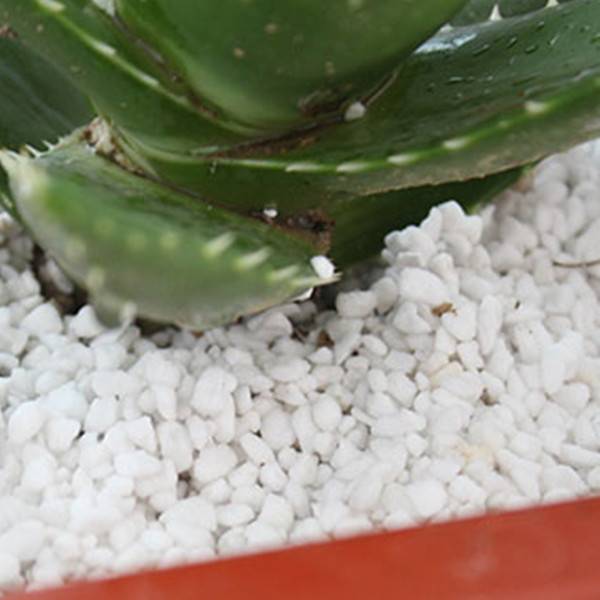
In all these scenarios, the technical advantages of Horticultural Coarse Perlite translate directly into tangible benefits. For instance, in controlled environment agriculture (CEA), its inertness and pH neutrality contribute to precise nutrient delivery systems, leading to optimized growth and resource efficiency. Its resistance to degradation ensures it maintains its structural integrity over time, making it a reliable and long-lasting choice compared to organic amendments that break down. This stability contributes to less frequent media replacement and consistent performance, a critical factor for large-scale commercial operations focused on yield and consistency. The inherent porosity aids in rapid root establishment, reducing transplant shock and accelerating the growth cycle. This ability to create a highly optimized and stable root environment is why coarse perlite is increasingly becoming the preferred choice for forward-thinking growers globally.
Technical Advantages of Horticultural Coarse Perlite: A Deep Dive
The widespread adoption of Horticultural Coarse Perlite in modern agriculture and horticulture is primarily due to its unparalleled technical advantages that address critical challenges in plant cultivation. These benefits stem directly from its unique physical and chemical properties, meticulously engineered during the expansion process.
- Exceptional Aeration & Drainage: This is arguably the most significant advantage of Horticultural Coarse Perlite. Its irregular, highly porous structure creates a vast network of air pockets (macro-pores) within the growing medium. This high air-filled porosity ensures that oxygen readily reaches the root zone, which is critical for root respiration, nutrient uptake, and overall plant vigor. Adequate oxygen prevents the accumulation of toxic compounds in the root zone and inhibits the growth of anaerobic pathogens. Concurrently, these macro-pores facilitate rapid drainage of excess water, preventing waterlogging and anaerobic conditions that lead to root rot, especially in sensitive plants like orchids, succulents, and many vegetables. This optimal balance of air and water is difficult to achieve with other media, providing a superior environment for sustained, healthy root growth.
- Optimal Water Retention: Despite its excellent drainage, Horticultural Coarse Perlite also possesses remarkable water retention capabilities. Water adheres to the irregular surface of each perlite particle and is held within its internal capillary pores. This allows it to absorb and slowly release moisture to plant roots, reducing the frequency of watering while ensuring a consistent supply of hydration. This dual function of superior drainage and effective water holding is a key differentiator, distinguishing it from inert media that solely offer drainage. This controlled release of water minimizes evaporative loss and ensures plants have access to moisture for longer periods, leading to less water consumption and more efficient irrigation schedules.
- pH Neutral and Stable: Perlite Horticultural Media is inherently pH neutral, typically ranging from 6.5 to 7.5. This neutrality means it does not react with or alter the pH of the nutrient solution or surrounding medium. For precision growers, this is invaluable as it allows for meticulous control over the pH of the growing environment, ensuring optimal nutrient availability for specific plant species. Unlike some organic amendments that can fluctuate in pH as they decompose, perlite provides consistent stability, preventing nutrient lockout and ensuring consistent plant health and growth. This property is particularly critical in advanced hydroponic systems where even minor pH fluctuations can significantly impact nutrient uptake.
- Sterile and Pathogen-Free: The high-temperature expansion process (850-1000°C) sterilizes the perlite, making it free from weeds, insect larvae, disease pathogens (like fungi, bacteria, and nematodes), and other contaminants. This inherent sterility provides a clean slate for plant growth, significantly reducing the risk of "damping-off" disease in seedlings and other soil-borne diseases that can devastate young plants. This characteristic is particularly beneficial in propagation, seed starting, and commercial greenhouse operations where disease prevention is paramount and costly. It provides a hygienic environment for delicate root systems to develop without biological interference.
- Lightweight & Easy to Handle: With a bulk density significantly lower than soil or even sand, Horticultural Coarse Perlite is extremely lightweight. This characteristic reduces the overall weight of potting mixes and container111s, making them easier to transport, move, and manage. For large-scale commercial operations, this translates to reduced shipping costs, improved labor efficiency, and less wear and tear on machinery. For home gardeners, it simplifies handling of large container111s and reduces strain. This lightweight property is also essential for applications like green roofs where structural load is a critical design factor.
- Chemically Inert: As an inert material, Horticultural Coarse Perlite does not chemically react with fertilizers or growing solutions. This means that nutrients supplied to plants remain available and are not bound or altered by the growing medium. This allows growers to have precise control over their nutrient delivery programs, preventing issues like nutrient lockout or deficiencies often associated with reactive growing media. Its low Cation Exchange Capacity (CEC) further ensures that nutrient ions are not held back by the media itself, making it ideal for closed-loop hydroponic systems and precise nutrient management.
- Long Service Life & Reusability: Unlike organic substrates that decompose over time, Horticultural Coarse Perlite is inorganic and maintains its structural integrity indefinitely. It does not break down, rot, or compact, ensuring consistent performance throughout the plant's life cycle and even across multiple growing seasons. This durability means less frequent media replacement, which translates into significant cost savings and reduced waste for commercial growers. In many commercial settings, perlite can be sterilized and reused, contributing to sustainability and further reducing operational expenses, provided proper sterilization protocols are followed to prevent disease transmission.
- Improved Root Development: The combination of excellent aeration, consistent moisture availability, and a stable, sterile environment provided by Perlite Horticultural Media significantly promotes vigorous and extensive root development. Healthy, oxygenated roots are the foundation for strong, productive plants, leading to enhanced nutrient uptake efficiency, improved plant resilience to environmental stresses, and ultimately, higher yields and better quality crops. The coarse particles ensure that roots have ample space to grow and spread without encountering compaction or waterlogged conditions.
These advantages are not theoretical; they are consistently observed in diverse horticultural settings, from massive commercial hydroponic farms maximizing tomato yields to small nurseries propagating delicate orchids. The consistent performance and reliable benefits of Horticultural Coarse Perlite make it a preferred choice for growers globally who prioritize efficiency, plant health, and productivity. Its versatility allows it to be used as a standalone medium or as a blend component, adapting to a wide range of plant species and cultivation techniques. The economic benefits of reduced watering, fertilizer efficiency, and lower disease incidence further solidify its position as a superior growing medium component.
Choosing Your Supplier: Navigating the Perlite Market
Selecting the right supplier for Horticultural Coarse Perlite is as crucial as understanding the product itself. While perlite's fundamental properties are universal, the quality, consistency, and service offered by manufacturers can vary significantly. A reputable supplier will not only provide a superior product but also offer the expertise and support necessary for optimal application.
When evaluating manufacturers or suppliers of Perlite Horticultural Media, consider the following factors:
- Quality Assurance & Certifications: Look for manufacturers who adhere to strict quality control protocols, evidenced by certifications such as ISO 9001. This indicates a commitment to consistent product quality, reliable technical specifications (like bulk density, pH, particle size distribution), and traceable manufacturing processes. A supplier that can provide comprehensive technical data sheets and certificates of analysis (CoA) for each batch demonstrates transparency and reliability. This commitment assures growers that the physical and chemical properties of the perlite will be consistent, crucial for maintaining uniform growing conditions across large operations.
- Experience & Industry Reputation: Companies with a long-standing history and strong reputation in the horticultural industry often possess deeper expertise. Their years of service imply a thorough understanding of grower needs, market trends, and product application challenges. For example, Kehui Mica, with its extensive experience in mica and perlite products, has built a reputation for delivering consistent, high-quality media designed for demanding horticultural environments. A supplier's track record reflects their ability to consistently meet demand and resolve issues.
- Consistency of Product Grade: Variability in particle size or physical properties can negatively impact plant growth. A top-tier manufacturer ensures that each batch of Horticultural Coarse Perlite meets specified grade parameters consistently. This consistency is vital for large-scale operations relying on uniform growing conditions and predictable plant performance. Inconsistent products can lead to uneven growth, increased disease susceptibility, and reduced yields, highlighting the importance of a supplier's robust quality control systems.
- Technical Support & Expertise: The best suppliers offer more than just a product; they provide technical support. This includes guidance on optimal blending ratios, troubleshooting common issues (e.g., irrigation strategies for perlite-based mixes), and advising on specific applications for different crops or growing systems. A knowledgeable and accessible technical team can be an invaluable resource for both novice and experienced growers, helping them maximize the benefits of Horticultural Coarse Perlite.
- Customization Capabilities: While standard coarse grades are common, some growers may require specific particle size ranges, specialized blends with other growing media, or unique packaging solutions. A flexible manufacturer capable of offering tailored solutions can provide significant advantages, particularly for specialized crops, unique growing systems (e.g., specific hydroponic drip systems), or large-volume clients seeking optimized delivery formats. This adaptability ensures the perlite perfectly integrates into diverse horticultural operations.
- Logistics & Delivery Reliability: Timely and efficient delivery is paramount, especially for commercial operations with tight planting schedules and high-volume needs. Assess a supplier's logistical capabilities, delivery networks, and ability to handle both large bulk orders and smaller, recurring shipments. Reliable delivery minimizes downtime, avoids supply chain disruptions, and ensures a continuous flow of materials to maintain production schedules.
- Sustainability Practices: Given the increasing focus on environmental responsibility, consider suppliers who demonstrate commitment to sustainable sourcing and manufacturing practices. While perlite is a natural mineral, efficient energy use in the expansion process, responsible quarrying, waste reduction, and packaging recyclability are important considerations that align with modern ecological values. Choosing such suppliers contributes to a more sustainable agricultural ecosystem.
Engaging with a trusted manufacturer like Kehui Mica means partnering with a company that not only supplies premium Horticultural Coarse Perlite but also acts as a strategic partner, contributing to your long-term success through product quality, technical insight, and reliable service. Their established track record and adherence to global standards offer a distinct advantage in the competitive horticultural landscape, providing a foundation of reliability and proven performance.
Customized Solutions with Perlite Horticultural Media
Recognizing that "one size fits all" rarely applies in the diverse world of horticulture, leading manufacturers of Perlite Horticultural Media offer customized solutions to meet specific grower needs. This flexibility allows for the optimization of growing conditions for a particular crop, climate, or cultivation method, further enhancing the benefits of Horticultural Coarse Perlite and maximizing its value proposition.
Customization primarily revolves around:
- Tailored Particle Size Distribution: While Horticultural Coarse Perlite is a defined grade, some applications might benefit from a slightly coarser or a more uniform particle range than standard offerings. For instance, large-scale hydroponic systems for specific vegetables might demand very consistent flow rates and air porosity for optimal root zone oxygenation and drainage. Manufacturers can adjust screening parameters during production to achieve desired ranges, optimizing drainage, aeration, and even capillary action for very specific requirements of sensitive crops or advanced irrigation systems. This fine-tuning ensures the media provides the exact physical properties needed.
- Pre-blended Substrate Mixes: Many growers, especially large commercial operations, prefer pre-blended mixes to ensure consistency, reduce labor costs, and simplify their supply chain. Manufacturers can offer custom mixes combining Horticultural Coarse Perlite with other components like peat moss, coco coir, vermiculite, or compost, precisely formulated to specific proportions based on the crop's needs and the grower's environmental conditions. This ensures that every bag or bale of growing media is identical, simplifying operations, improving predictability of yields, and reducing the need for on-site blending.
- Enrichment and Additives: For specialized applications, perlite can be infused or coated with beneficial additives. While perlite is naturally inert, some custom solutions might involve adding wetting agents to improve initial water absorption, or even trace amounts of nutrients for very early seedling stages. These specialized treatments can optimize the initial performance of the media, catering to niche market demands or specific cultivation challenges.
- Packaging and Delivery Formats: Beyond standard 4 cu. ft. bags or bulk bags, customization can extend to packaging types and sizes to fit specific operational requirements. This might include larger or smaller bags, specialized bagging materials for increased durability or UV resistance, or even custom packaging with client branding for resale. Delivery schedules can also be tailored to just-in-time inventory systems, minimizing storage needs for large commercial growers and optimizing logistical efficiency.
- Product Development & Consultation: For innovative or specialized growing projects, a manufacturer might collaborate closely with growers on developing entirely new perlite-based solutions. This could involve exploring different perlite grades for specific hydroponic systems, optimizing perlite for propagation plugs, or even incorporating perlite into novel growing structures. Companies with strong R&D capabilities and horticultural experts can provide invaluable consultation services, conducting trials and offering data-driven recommendations to ensure the optimal perlite product is selected or developed for maximum performance and cost-effectiveness.
The ability to provide these custom solutions demonstrates a manufacturer's commitment to partnership and deep understanding of the diverse needs within the horticultural sector. It underscores the value of engaging with experienced suppliers who view themselves as facilitators of growth, not just providers of materials, offering truly bespoke solutions that drive agricultural innovation and productivity.
Application Cases & Success Stories
The practical benefits of Horticultural Coarse Perlite are best illustrated through real-world application examples. These cases demonstrate how this versatile medium translates its technical advantages into tangible successes for growers across different scales and specialties, highlighting its impact on plant health, yield, and operational efficiency.
-
Case Study 1: Commercial Hydroponic Tomato Farm Optimization
A large commercial hydroponic tomato farm, spanning several acres in a semi-arid region, faced persistent challenges with inconsistent yields, elevated water consumption, and susceptibility to root diseases like Pythium in their previous rockwool substrate. They made a strategic shift to a precisely formulated blend of Horticultural Coarse Perlite (70%) and coco coir (30%). The coarse perlite component significantly improved the air-filled porosity around the roots, leading to better oxygenation and a dramatic reduction in instances of anaerobic root rot. The inert and pH-neutral nature of the perlite also allowed for more precise nutrient delivery and pH control within their recirculating system, minimizing nutrient lockout. Within the first two growing seasons, the farm reported a measurable 15% increase in marketable fruit yield, along with a 20% reduction in irrigation water usage due to perlite's efficient water retention. Furthermore, they observed significant savings on fungicide applications and increased plant vigor throughout the crop cycle, directly attributing the improvement to the optimized growing media blend and the superior root environment provided by the perlite.
-
Case Study 2: High-Value Orchid Nursery Propagation Enhancement
An internationally renowned orchid nursery, specializing in rare and sensitive Phalaenopsis and Cattleya varieties, struggled with inconsistent moisture levels and inadequate aeration in their traditional bark-based mixes, particularly during the critical propagation phase. Orchids are extremely susceptible to root rot in waterlogged conditions. By carefully incorporating Perlite Horticultural Media into their custom bark-based blends, they achieved a perfect balance of sharp drainage and consistent moisture availability, preventing water stagnation. The sterile nature of perlite, resulting from its high-temperature manufacturing process, dramatically minimized fungal issues like "damping-off" disease during the delicate seedling and rooting stages. The nursery observed faster and more uniform root establishment, healthier foliage, and a notable reduction in plant loss due to root issues. This led to a higher successful propagation rate (an increase of 10-12% in successful rooting), increased plant resilience, and ultimately, significantly improved profitability from their high-value plants, solidifying their reputation for premium orchid production.
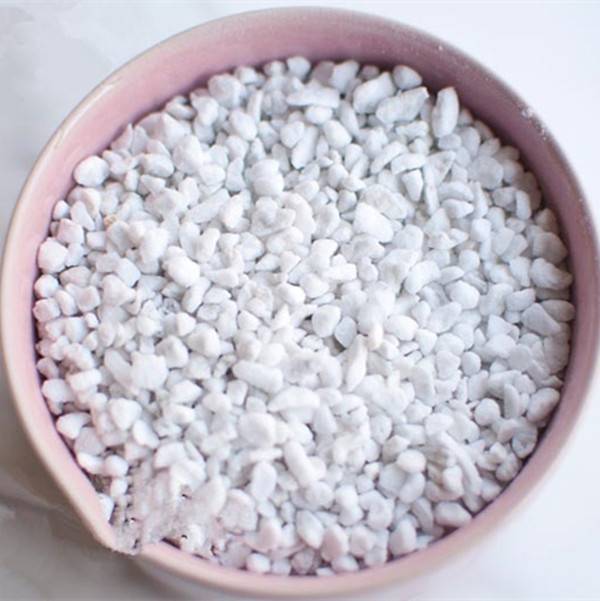
-
Case Study 3: Urban Vertical Farm for Sustainable Leafy Greens Production
An innovative urban vertical farm operating in a metropolitan area, focused on sustainable production of leafy greens and culinary herbs in a controlled environment system, transitioned to a pure Horticultural Coarse Perlite medium for their grow beds. The extremely lightweight nature of the perlite significantly reduced the structural load on their multi-tiered racking systems, making the entire setup more feasible, cost-effective to build, and expandable. Crucially, the excellent aeration and drainage provided by the coarse perlite ensured rapid and uniform growth of sensitive greens, preventing "wet feet" issues common in dense vertical setups and optimizing nutrient uptake. The inherent sterility of the medium also eliminated the need for chemical sterilization between crop cycles, contributing to their organic certification goals and significantly reducing operational costs and environmental impact. The farm reported consistent, high-quality yields year-round, with improved leaf texture and extended shelf life, showcasing perlite's role in high-efficiency, urban agriculture.
These examples vividly underscore the practical value and demonstrable benefits of integrating high-quality Horticultural Coarse Perlite into diverse cultivation strategies. From boosting yields and reducing resource consumption in large-scale commercial settings to ensuring the health of delicate, high-value plants and enabling innovative urban farming solutions, its role is consistently pivotal. The consistent performance and the ability to mitigate common growing challenges make it a preferred choice for growers striving for efficiency, sustainability, and superior crop quality.
Trust & Reliability: Our Commitment to Your Success
At Kehui Mica, our commitment extends beyond delivering premium Horticultural Coarse Perlite; it encompasses fostering trust and ensuring the reliability of our products and services. We understand that in the demanding horticultural industry, consistency, expert support, and transparent processes are paramount for our clients' success. Our philosophy is rooted in building long-term partnerships through unwavering quality and exceptional service.
- Industry Certifications & Adherence to Standards: We rigorously adhere to international quality management standards, including ISO 9001. Our manufacturing processes for Perlite Horticultural Media are meticulously controlled, from raw material sourcing to final packaging, ensuring every batch meets the highest standards for particle size distribution, bulk density, pH stability, and sterility. This commitment to quality is verifiable through comprehensive technical data sheets and certificates of analysis available upon request for every shipment, providing complete transparency and assurance of product integrity.
- Decades of Expertise and Innovation: With over two decades of dedicated experience in the mineral processing industry, Kehui Mica has accumulated unparalleled knowledge in perlite expansion technology. Our in-house team of engineers and horticultural specialists are continuously involved in research and development, ensuring our Horticultural Coarse Perlite remains at the forefront of horticultural innovation. This deep expertise translates into superior product performance, advanced solutions, and reliable support for our partners, addressing both current and emerging industry needs.
- Rigorous Testing & Multi-Point Quality Control: Every single production run of our Horticultural Coarse Perlite undergoes stringent, multi-point laboratory testing. We employ advanced analytical techniques and follow strict ASTM guidelines to verify critical parameters such as exact particle size distribution, water holding capacity, air porosity, and pH. Our internal testing procedures are often more stringent than general industry minimums, ensuring unparalleled consistency and performance batch after batch, thereby eliminating variability in your growing media.
- Comprehensive Customer Support & Technical Guidance: Our dedicated team of horticultural specialists and technical experts is available to provide unparalleled support and practical guidance. Whether you need assistance with optimal blending ratios for specific crops, troubleshooting common growing media issues, or developing custom solutions for unique cultivation systems, we are committed to providing timely, knowledgeable, and data-driven assistance. Your success in cultivation is our absolute priority, and we serve as a reliable extension of your R&D team.
- Reliable Delivery & Global Logistics Network: We understand the critical importance of timely and efficient supply for commercial agricultural operations. Our robust global supply chain and extensive logistics network ensure reliable and prompt delivery of Horticultural Coarse Perlite to your location, whether locally or internationally. We offer flexible delivery options, including bulk shipments and palletized bags, to suit your operational needs and minimize downtime, ensuring a seamless supply that keeps your production schedules on track.
- Guaranteed Performance & Client Satisfaction: We stand unequivocally behind the quality and performance of our Horticultural Coarse Perlite. Should our product not meet the published specifications or your expectations, we offer a clear warranty and commitment to resolving any issues promptly and effectively. Our long-standing client relationships, built on mutual trust and accountability, are a testament to our dedication to client satisfaction and product excellence.
By choosing Kehui Mica for your Perlite Horticultural Media needs, you are not just purchasing a product; you are investing in a partnership backed by unparalleled expertise, extensive experience, undisputed authority, and unwavering trustworthiness. We are committed to being a foundational element in your horticultural success, enabling you to achieve healthier plants and higher yields consistently.
Frequently Asked Questions (FAQ) about Horticultural Coarse Perlite
To provide further clarity and enhance understanding for professionals and enthusiasts, here are answers to some common professional and technical questions regarding Horticultural Coarse Perlite and its optimal application:
- Q1: What is "Bulk Density" for Horticultural Perlite, and why is its low value significant?
- A1: Bulk density refers to the mass of a given volume of uncompacted perlite, including the air spaces between particles. For Horticultural Coarse Perlite, a typical low bulk density (e.g., 90-150 kg/m³) is profoundly significant. It indicates an extremely lightweight material, which directly translates to reduced shipping costs, easier handling for growers (especially in large-scale operations or for heavy potted plants), and less structural load on elevated growing systems like green roofs or vertical farms. This low density is a direct result of the expansion process, creating numerous internal air cells.
- Q2: How does "Air Porosity" differ from "Water Holding Capacity" in perlite, and why is their balance critical?
- A2: Air porosity (or air-filled porosity) measures the volume of air spaces available in the medium after it has drained freely, typically at container111 capacity. It's essential for root respiration, preventing anaerobic conditions, and supporting the beneficial microbial activity. Water Holding Capacity (WHC), conversely, refers to the amount of water the perlite can retain, primarily on its irregular surface and within its internal capillary pores. The balance between these two is critical: Horticultural Coarse Perlite provides high air porosity for optimal oxygenation and efficient drainage, coupled with sufficient WHC to keep roots consistently hydrated without promoting waterlogging. This dual functionality is superior to media that excel at only one aspect.
- Q3: Is Horticultural Coarse Perlite truly "pH neutral," and what are the implications for nutrient management?
- A3: Yes, Horticultural Coarse Perlite is considered chemically inert and essentially pH neutral, typically having a pH range between 6.5 and 7.5. This non-reactive property means it will not significantly alter or buffer the pH of the nutrient solution or soil mixture it's incorporated into. This stability is highly advantageous for precision horticulture, as it allows growers to accurately control the nutrient solution's pH without interference from the substrate. This ensures optimal nutrient availability and prevents issues like nutrient lockout or specific element deficiencies/toxicities often caused by reactive media.
- Q4: Can Perlite Horticultural Media be reused across multiple growing cycles, and what are the best practices for doing so?
- A4: Yes, Perlite Horticultural Media is highly durable and can often be reused for multiple growing cycles due to its inorganic nature and resistance to decomposition and compaction. Best practices for reuse include thoroughly cleaning the perlite to remove root debris and other organic matter. Most importantly, it's crucial to sterilize the perlite between uses to eliminate any lingering disease pathogens, insect eggs, or weed seeds from previous crops. Common sterilization methods include steam sterilization (for larger operations) or chemical treatments (e.g., hydrogen peroxide solution for smaller scales). Proper reuse contributes to sustainability and significant cost savings over time.
- Q5: What defines the "Particle Size Distribution" for coarse perlite, and why is this specific grading important?
- A5: For Horticultural Coarse Perlite, the typical particle size distribution ranges from approximately 2.0 mm to 6.0 mm, although exact ranges can vary slightly by manufacturer based on screening precision. This specific coarse sizing is meticulously designed to maximize the macro-pore spaces within the growing medium, promoting superior drainage and aeration compared to finer grades of perlite. This larger particle size is particularly important for preventing compaction, ensuring rapid water movement, and guaranteeing adequate oxygen supply to the root zone, which is critical for preventing root rot and supporting vigorous root development, especially in hydroponic systems and for sensitive crops.
- Q6: How does the manufacturing process (specifically thermal expansion) ensure the sterility of perlite?
- A6: The high-temperature thermal expansion process is the key to perlite's inherent sterility. Raw perlite ore is subjected to extreme temperatures, typically ranging from 850°C to 1000°C (1562°F to 1832°F), in a flash heating furnace. These intense temperatures instantly vaporize the water within the ore, causing it to expand, and simultaneously incinerate any organic matter, weed seeds, insect larvae, or microbial pathogens (e.g., bacteria, fungi, viruses) that might have been present in the raw ore. This results in a completely sterile product, providing a clean and disease-free medium for plant propagation and growth, significantly reducing the risk of plant diseases from the outset.
- Q7: Beyond traditional horticulture, what other industries or niche applications utilize the unique properties of Horticultural Coarse Perlite?
- A7: While primarily known for its extensive use in horticulture and agriculture, the versatile properties of Horticultural Coarse Perlite extend to several other industries. Its lightweight nature, inertness, and excellent insulating properties make it valuable in construction (as an aggregate in lightweight concrete, plaster, and insulation boards) and refractory applications. It is also used in industrial filtration processes (for liquids and gases) due to its porous structure, as an absorbent for chemical spills, and in specialized acoustic or fire-resistant materials. In agriculture, beyond direct growing media, it can be used for improving heavy soils in landscaping or sports turf applications to enhance drainage and aeration, often in combination with finer grades of perlite for varied soil improvement needs.
For further insights into the science and application of perlite in horticulture, please consult the following authoritative resources:
- Journal of the American Society for Horticultural Science - Perlite as a Growing Medium Component: Physical Properties and Implications for Plant Growth
- Perlite Institute - Official Technical Publications and Research on Horticultural Perlite
- GrowerTalks Magazine - Best Practices for Incorporating Perlite into Container Media for Optimal Results
- Agriculture (MDPI) - A Review of Perlite in Soilless Culture: Opportunities and Challenges
-
The Versatile World of Phlogopite Mica: Properties, Forms, and ApplicationsNewsJul.14,2025
-
The Versatile Applications of Calcined Mica: From Decoration to Industrial UseNewsJul.14,2025
-
The Role of Muscovite Mica in Industrial Insulation MaterialsNewsJul.14,2025
-
The Benefits of Using Expanded Clay Pebbles in Hydroponics and Soil GardeningNewsJul.14,2025
-
Innovative Applications of Mica Flake in Paints and CoatingsNewsJul.14,2025
-
Gardening Expanded Clay Usage: A Complete GuideNewsJul.14,2025
-
The Use of Natural Mica Powder in Skincare ProductsNewsJun.11,2025

